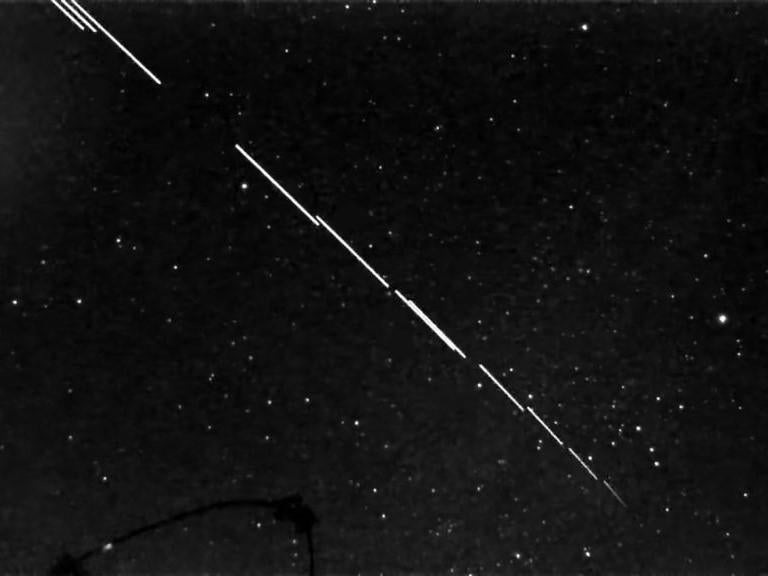SpaceX tests twisting technique to make Starlink satellites less visible
'String of bright pearls' will still be visible in the week following launch

Your support helps us to tell the story
From reproductive rights to climate change to Big Tech, The Independent is on the ground when the story is developing. Whether it's investigating the financials of Elon Musk's pro-Trump PAC or producing our latest documentary, 'The A Word', which shines a light on the American women fighting for reproductive rights, we know how important it is to parse out the facts from the messaging.
At such a critical moment in US history, we need reporters on the ground. Your donation allows us to keep sending journalists to speak to both sides of the story.
The Independent is trusted by Americans across the entire political spectrum. And unlike many other quality news outlets, we choose not to lock Americans out of our reporting and analysis with paywalls. We believe quality journalism should be available to everyone, paid for by those who can afford it.
Your support makes all the difference.SpaceX has deployed a variety of tactics to make its recently launched Starlink satellites less visible in the night's sky, including twisting the position of solar panels to make them less reflective.
The private space firm had faced criticism from some astronomers, who complained that the long strings of satellites were disrupting observations.
The satellites, which are designed to beam high-speed internet back down to Earth, have also triggered hundreds of UFO reports due to their unusual formation.
Astronomers have compared their appearance to a "string of bright pearls" moving steadily across the sky, with each launch containing 60 satellites.
Eight batches of Starlink satellites have been launched so far, with plans for them to eventually form a 12,000-strong constellation.
In 2019, astrophysicist Dave Clements described the Starlink project as a "tragedy" for astronomy, claiming that the so-called megaconstellations of satellites would cause interference for both radio and optical telescopes.
In response, SpaceX CEO Elon Musk said he was taking "key steps" to reduce their brightness, which are now being realised on the latest launch.

SpaceX worked with the American Astronomical Society (AAS) to test different methods to address the issue. These included painting reflective surfaces black and using sun shades to block sunlight.
The latest approach involves twisting the satellites during periods of their orbit when they are most reflective, so that only the "knife-edge" thin sides of the solar panels are visible.
SpaceX told The Independent that it also worked with the National Radio Astronomy Observatory (NROA) and the Green Bank Observatory (GBO) to minimise the impact of the satellites.
Despite these measures, there will still be times that the satellites are visible to the unaided eye and will continue to be noticeable at certain times in the first week following their launch.
"We've taken an experimental and iterative approach to reducing the brightness of the Starlink satellites. Orbital brightness is an extremely difficult problem to tackle analytically," the firm said in a statement.
"There will be a small percentage of instances when the satellites cannot roll all the way to true knife edge to the Sun. This could result in the occasional set of Starlink satellites in the rorbit raise of flight that are temporarily visible for one part of an orbit."
Anyone hoping to watch the Starlink satellites pass overhead can follow their progress in real-time through the Find Starlink website.
Join our commenting forum
Join thought-provoking conversations, follow other Independent readers and see their replies
Comments